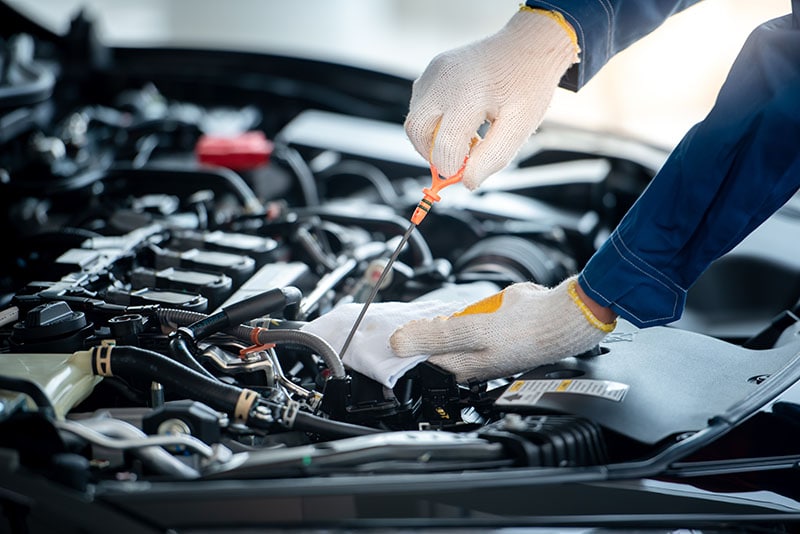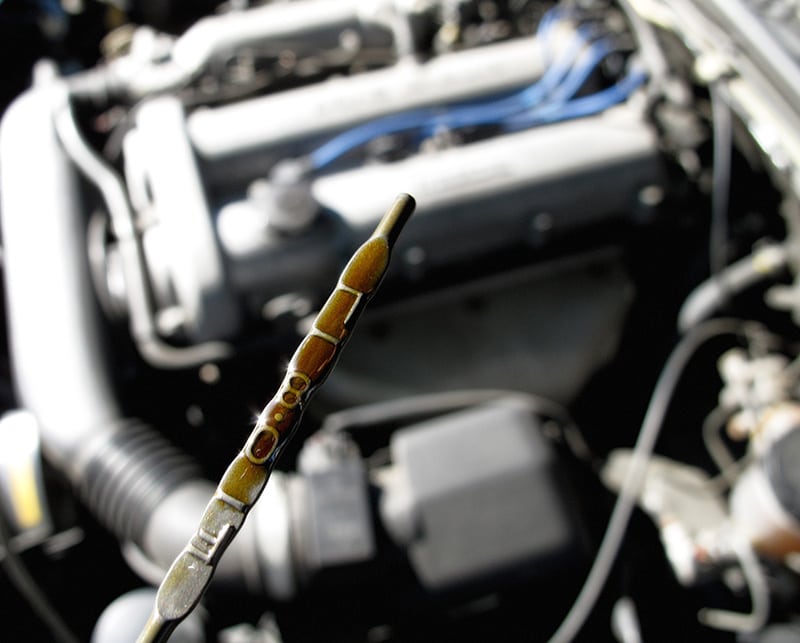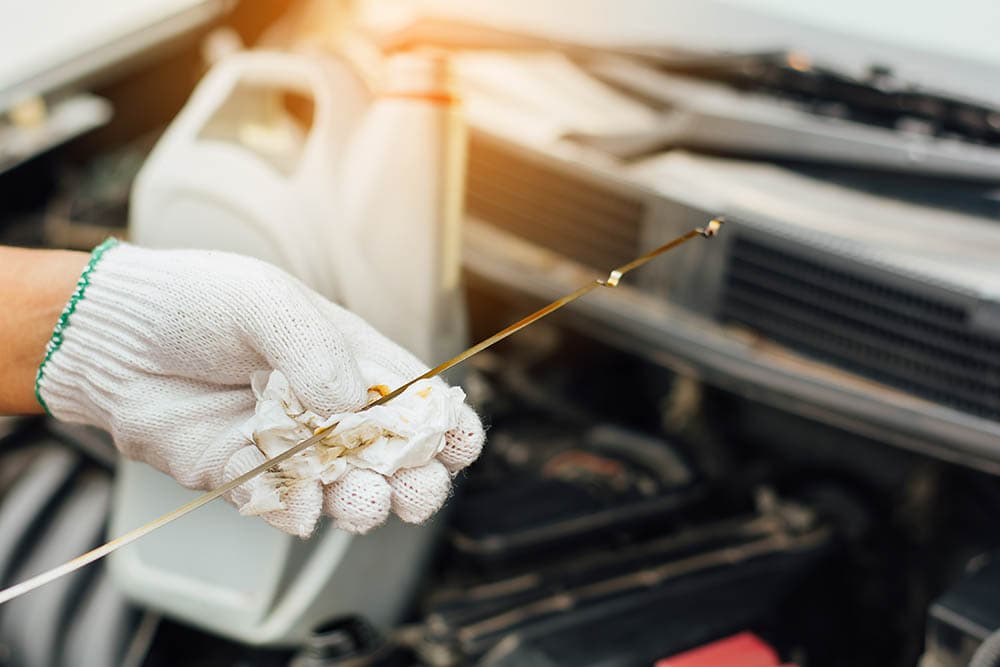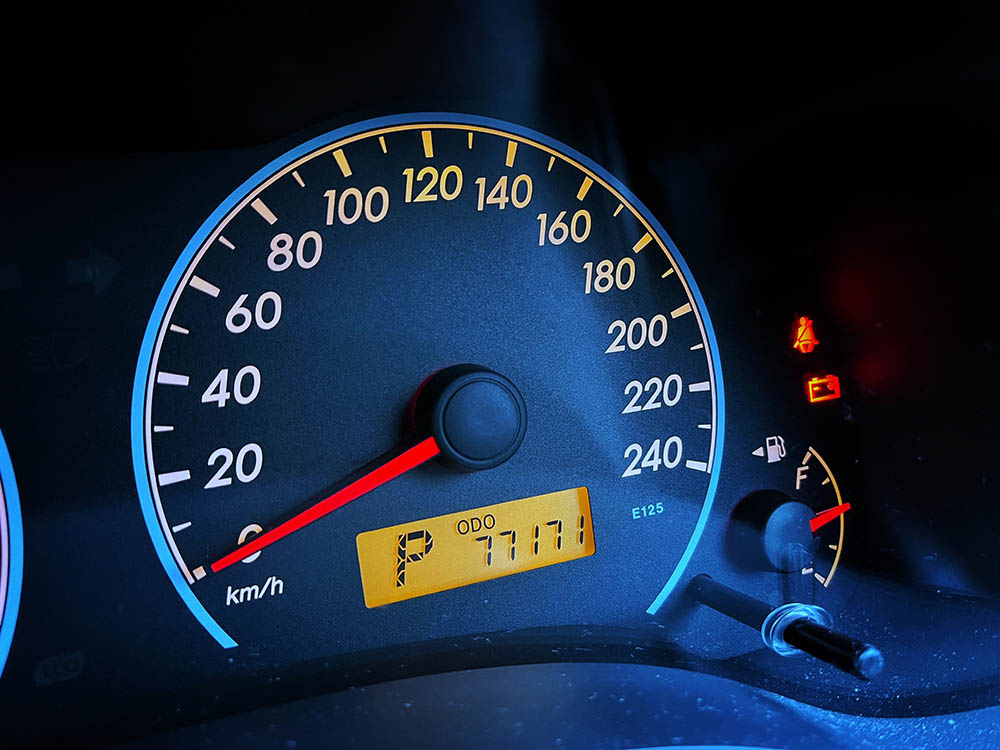How to Check Engine Oil: 5 Simple Steps & 5 More Tips
-
Pete Ortiz
- Last updated:

The lifeblood of your car’s engine is the oil. Besides reducing friction and temperature, engine oil works as a lubricant to ensure the engine runs smoothly without grinding to a halt.
Some vehicles hardly consume any engine oil, whereas others can drip plenty. For that reason, it’s sensible to check your car’s engine oil level once in a while to ensure the level is right but also clean.
This blog post will walk you through the necessary steps when checking engine oil – from preparation to completion and everything in between. We also provide the best tips to help you change your engine oil swiftly and correctly.
Click to Jump Ahead:
The 5 Simple Steps for Checking Car Engine Oil Level
Modern cars have an electronic sensor that detects and warns about low engine oil when it approaches the safe level. However, in most cases, a dipstick is used to check the oil level.
While it may sound a little goofy, dipstick oil analysis actually works quickly and cheaply.
- A towel for cleaning the dipstick
- Nitrile gloves to protect your hands from oil dirt
- A new bottle of engine oil (in case you have to top up the oil)
- A funnel for topping up with
Sit tight for the following step-by-step guide for checking engine oil using a dipstick:
1. Park the Car on Level Ground

For an accurate reading, you must park your car on level ground. Parking on top of a ramp or an uneven patch that tilts the vehicle may provide the wrong oil level.
Turn off the engine and wait for 10–15 minutes to allow it to cool off. As it cools, the oil returns to the oil pan, meaning you can’t obtain accurate results when the engine is still hot.
2. Find the Dipstick and Wipe It Clean
Under the bonnet of your car, you should find a brightly-colored plastic or wooden handle for your dipstick. Its location may vary depending on whether your vehicle has a transverse (front-wheel drive) or inline (rear-wheel drive) engine. Nonetheless, your owner’s manual should mention how to find it.
With your gloves on, remove and wipe the dipstick clean using a kitchen towel. Ensure the towel is dry and clean since moisture or dirt may damage the engine components.
3. Dip Back the Dipstick

Insert the dipstick into the oil chamber, ensuring you push it all the way back in. Take it out after a second, hold it horizontally, and notice the oil mark.
Ideally, the reading should be between the maximum and minimum markings. If it’s below halfway or the minimum limit, you’ll need to top up with new oil, half-quart at a time. Then wipe the dipstick, reinsert it, and check again.
4. Observe the Engine Color
The oil color is another crucial factor that determines whether it’s time to change the oil or not. If you’ve put on white gloves, you can touch the dipstick on them and notice the oil color. While new oil should be smooth, glossy, and transparent, aged oil looks too thick, too dark, sludgy, and smells like rotten cheese.
You can also identify used-up oil if a drop of it spreads out over a water surface instead of beading up. This alternative oil test is known as the blotter spot test.
5. Top Up the Engine Oil

Once you have established that your car’s engine oil needs changing, here’s how to do it:
- Find the filler cap written ‘oil’ and take it off.
- Use the funnel to carefully pour your new oil. To avoid filling up too much, it’s advisable to pour one quart at a time.
- Wait a couple of minutes to allow the oil to flow to the bottom of the engine before rechecking the level using the dipstick.
- Close the filler cap tightly after ensuring the new oil level is neither too low nor too high, since both are just as harmful to the engine.
Why Is It Necessary to Check Your Car’s Engine Oil?
Your car’s engine is a complex component that contains multiple moving parts. While most of these moving parts are metallic, oil acts as a lubricant to keep the bearings and other frictional surfaces from wearing out. Besides, it serves as a heat sink, gathering up excess heat and transferring it out of the engine through convection.
Now, imagine running the engine with less oil. Metal will rub on metal, quickly causing irreversible damage. In addition, when motor oil burns off over time, it leaves behind a thick sludge that blocks some engine parts from functioning properly, therefore hindering the efficient running of the engine.
As Cars.com summarizes, it’s necessary to change your car oil because:
- The engine cannot run without oil.
- Engine oil becomes dirty over time, therefore reducing the longevity and efficiency of your engine.
- Regularly changing the oil prevents extreme engine damage, ultimately saving up on repair costs.
How Often Should You Check Your Car’s Engine Oil Level?
Whereas your mechanic will drain the old oil, replace the filter, and add new oil whenever you take your car for annual service, it isn’t just enough. Oil check analysis is one of the most crucial car maintenance practices you should do. Fortunately, you can do it by yourself.
We recommend checking your oil levels every 500–1,000 miles or before embarking on long drives. It’s also worth refilling before taking your car for inspection, since the garage will need to run the engine to test the exhaust emission levels. If the engine oil is almost depleted, they won’t test your car.
How to Find Out Which Oil Your Car Needs?
There’s one important thing you need to know before topping up your engine with new oil.
Depending on your engine’s needs and the manufacturer’s advice, you must refill your car using a specific type of oil only. It could either be conventional, synthetic, or high-mileage oil. You must ensure to choose a type of oil with the right viscosity for your engine – if you look up the vehicle owner’s manual, you will find detailed information.
The 5 Tips for Keeping Your Engine Oil in Check
Since oil is such an important component of the engine, you must always be on the lookout for low oil levels. If you are fond of forgetting to change the oil, the following tips will help you keep your car’s oil game competently high:
1. Check Your Engine Oil Level at Every Gas Refill

Typically, vehicles run for more than 1,000 kilometers between fill-ups, but this may vary depending on fuel efficiency, gas tank size, and other factors. However, it would be wise to monitor the engine oil level after every refill. By accustoming yourself to this routine, your car’s engine oil levels will always remain in good and balanced condition.
2. Always Feel the Oil with Your Fingers
During oil checks, you must feel the roughness of the oil to ascertain whether your engine is clean. If you rub it between your fingers and it feels slightly abrasive, an oil change is due, and you must do it sooner rather than later.
3. Know Your Oil Maintenance Intervals

Depending on the models, some engines will require an oil change every 5,000 kilometers while others may require it at longer intervals, such as 10,000 or even 20,000 kilometers. Other vehicles (modern) have automatic engine oil life monitors that notify the driver when an oil change is due. Nonetheless, it’s important to bear in mind when your car needs new oil. Perhaps you do it once every week or twice every month. Always know the intervals and maintain strict compliance with changing your car’s engine oil at the end of each interval.
4. Download a Smartphone App to Remind You When an Oil Change Is Due
If you aren’t so sure about remembering routine maintenance practices such as changing the oil, several smartphone apps will help you stay on top of your vehicle’s major maintenance milestones. You can download apps such as aCar, Auto Care 1, myCARFAX.
5. Change the Oil Filter Regularly

Every 5,000 kilometers or three months (whichever comes first), it’s advisable that you replace your car’s oil filter. Most car manufacturers, though, recommend changing the oil filter at every oil change; you should confirm with the user manual. Oil filters remove grit and grime and keep them from contaminating the engine when the oil is circulating. Being quite inexpensive, ensure to change it regularly to keep your engine as clean and efficient as possible.
Conclusion
Just as pet lovers feed their pets to remain strong, vehicle owners change their cars’ engine oil to ensure they are powerful. Don’t wait until it’s almost depleted. So, if you want to carry out an oil change without visiting a car service company, we have you covered.
First, you must park the car on level ground and wait until the engine cools off. Then find the dipstick from the hood of your car, wipe it clean, and entirely dip it back. If the oil level is too low, you’ll have to add new oil to keep your engine running efficiently.
Good luck changing your engine oil!
Featured Image Credit: Bell Ka Pang, Shutterstock
Contents


